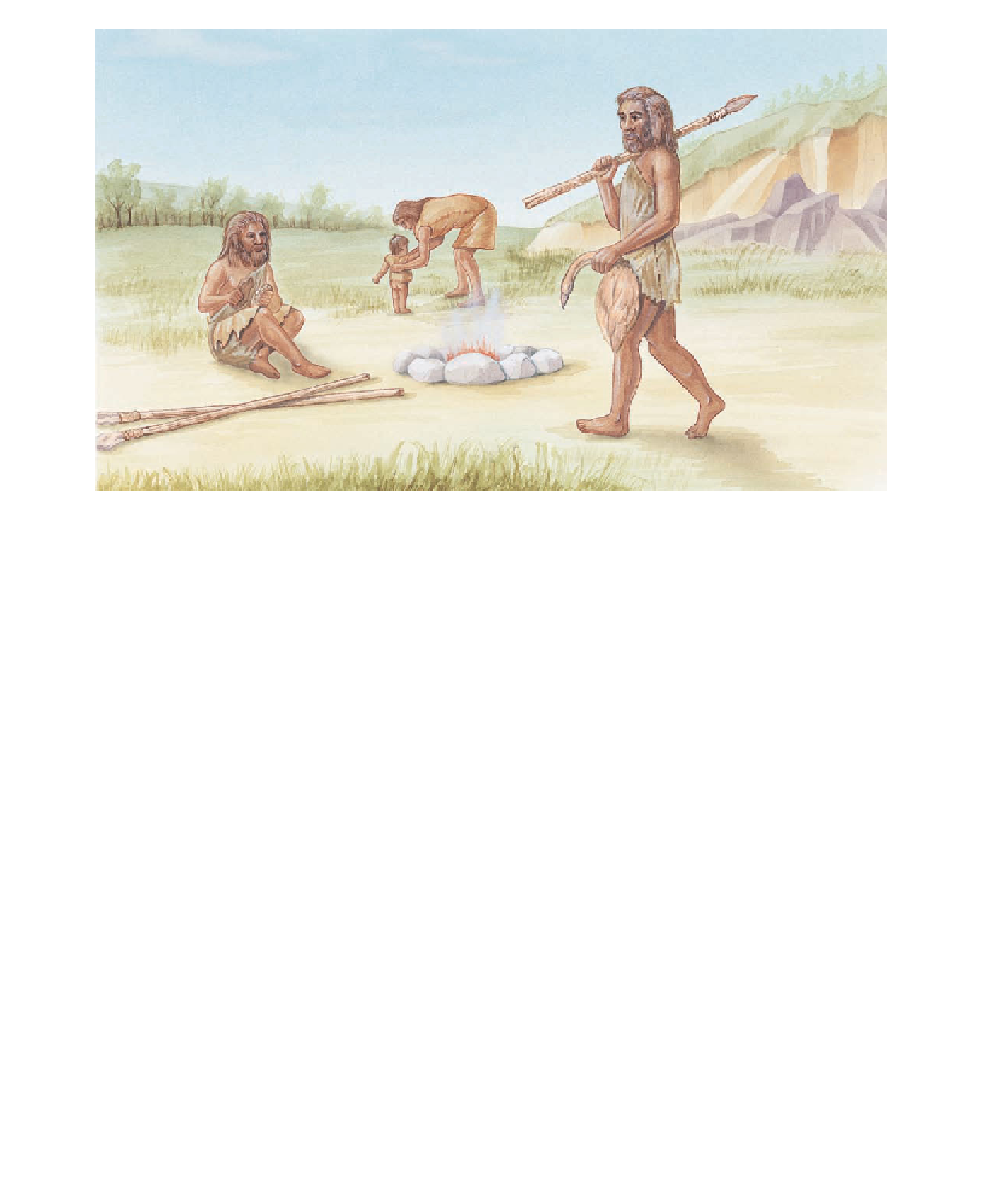Geology Reference
In-Depth Information
◗
Figure 23.38
Pleistocene Cro-Magnon Camp in Europe Cro-Magnons were highly skilled hunters
who formed living groups of various sizes.
in their hunts, including perhaps the bow and arrow. They
sought refuge in caves and rock shelters, and formed living
groups of various sizes.
With the appearance of Cro-Magnons, human evolution
has become almost entirely cultural rather than biologic.
Since the evolution of the Neanderthals approximately
200,000 years ago, humans have gone from a stone culture
to a technology that has allowed us to visit other planets
with space probes and land men on the Moon. It remains
to be seen how we will use this technology in the future and
whether we will continue as a species, evolve into another
species, or become extinct as many groups have before us.
These facts lead to three questions: (1) What caused
Pleistocene extinctions? (2) Why did these extinctions
eliminate mostly large mammals? and (3) Why were
extinctions most severe in Australia and the Americas? There
is currently no completely satisfactory explanation, but two
competing hypotheses are currently being debated. One
holds that rapid climatic changes at the end of the Pleistocene
caused extinctions, whereas another, called
prehistoric over-
kill,
considers that human hunters were responsible.
Rapid changes in climate and vegetation occurred over
much of Earth's surface during the Late Pleistocene as gla-
ciers began retreating. The North American and northern
Eurasian open-steppe tundras were replaced by conifer and
broadleaf forests as warmer and wetter conditions prevailed.
The Arctic region flora changed from a productive herba-
ceous one that supported a variety of large mammals, to a
relatively barren water-logged tundra that supported a far
sparser fauna. The southwestern U.S. region also changed
from a moist area with numerous lakes, where saber-toothed
cats, giant ground sloths, and mammoths roamed, to a
semiarid environment unable to support a diverse fauna of
large mammals.
Rapid changes in climate and vegetation can certainly
affect animal populations, but there are several problems
with the climate hypothesis. First, why didn't the large
mammals migrate to more suitable habitats as the climate
and vegetation changed? After all, many other animal
species did. For example, reindeer and the Arctic fox lived
in southern France during the last glaciation and migrated
Extinctions are part of the evolutionary history of life, but
during times of mass extinction, Earth's biotic diversity
sharply declined, as at the end of the Paleozoic and Mesozoic
eras. In marked contrast, the Pleistocene extinctions were
rather modest, but they did have a profound effect on genera
of large terrestrial mammals (those weighing more than
40 kg), and some large fl ightless birds. Particularly hard hit
were the mammalian faunas of Australia and the Americas.
In Australia, 15 of the continent's 16 genera of large
mammals died out. North America lost 33 of 45 genera of
large mammals, and in South America, 46 of 58 large genera
went extinct. In contrast, Europe had only 7 of 23 large
genera go extinct, and in Africa south of the Sahara, only 2
of 44 died out.

Search WWH ::

Custom Search